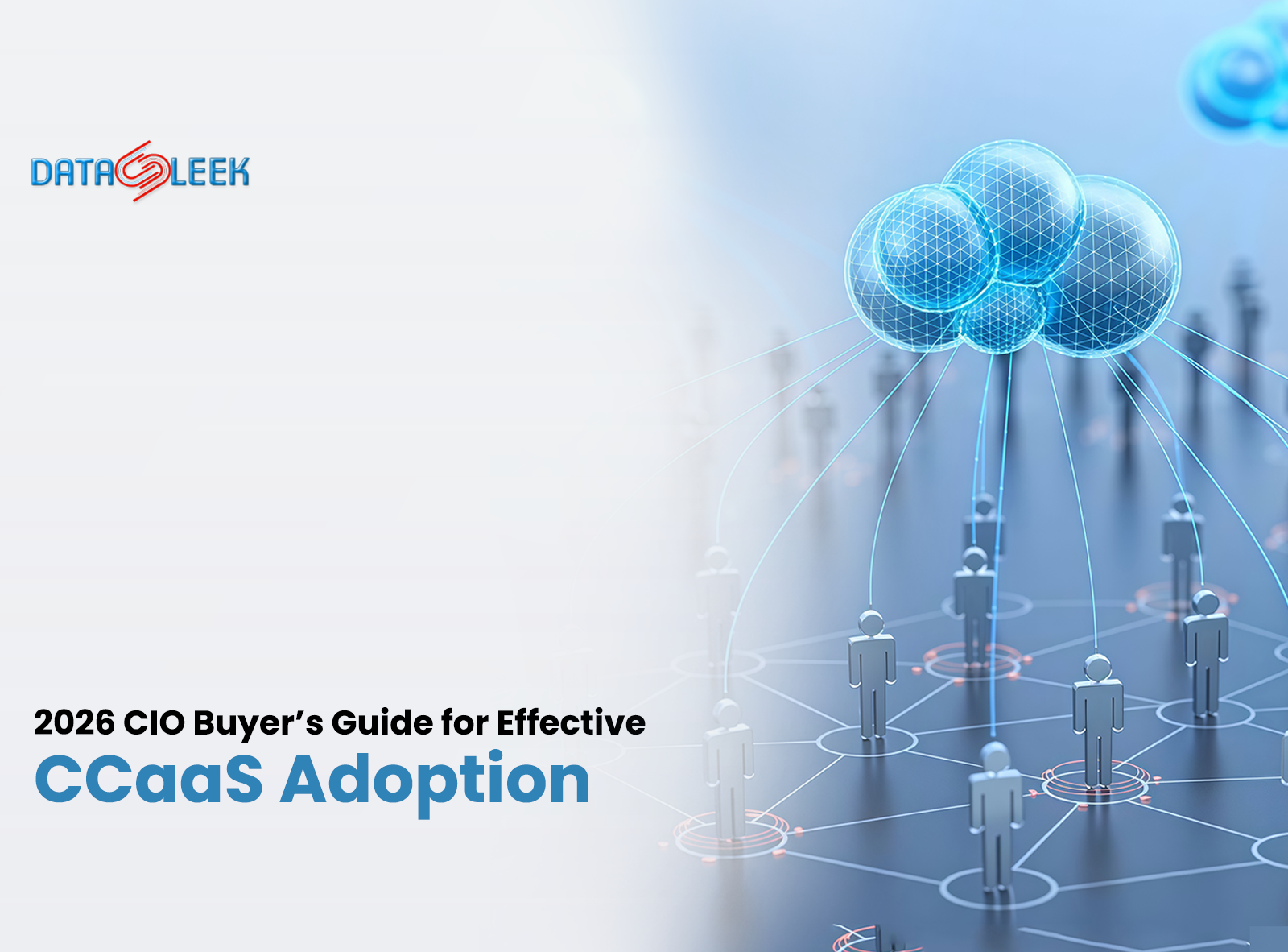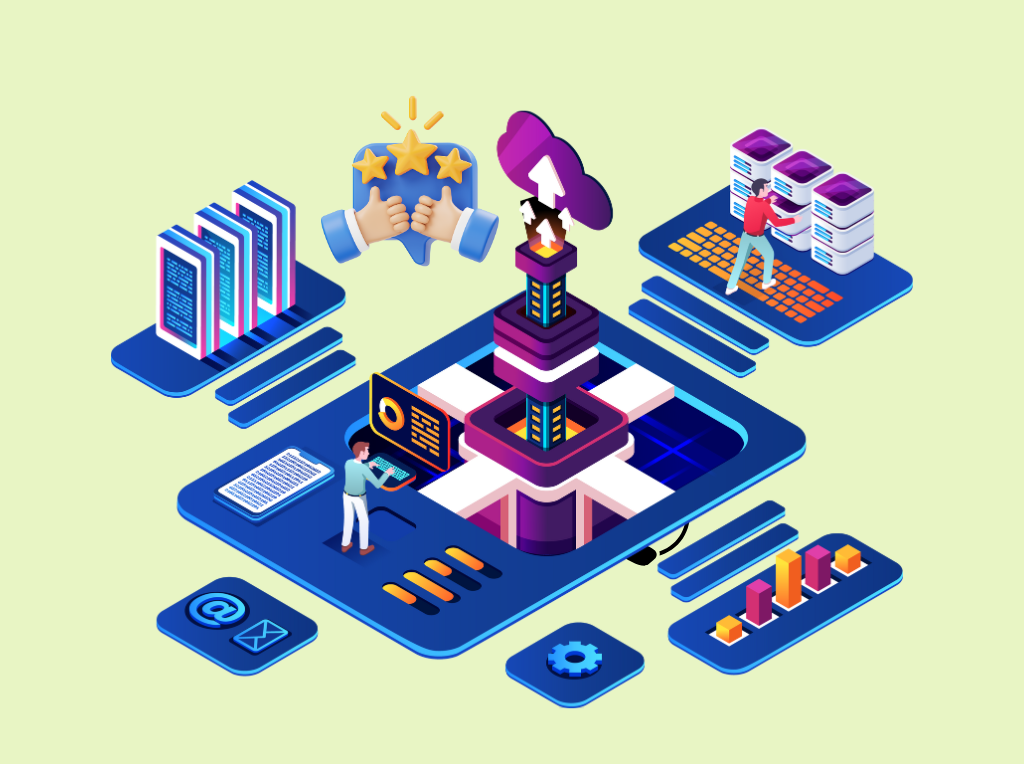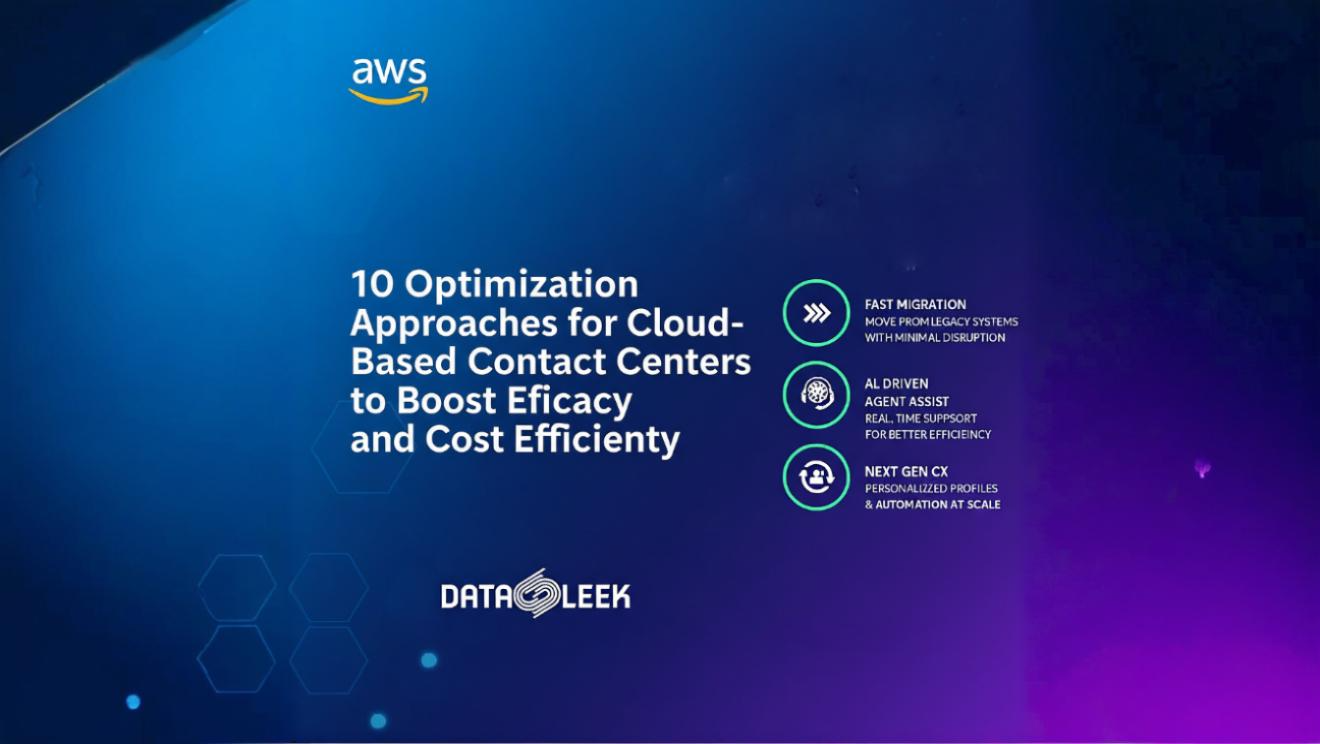Contact Center as a Service (CCaaS) is no longer niche — it’s becoming core infrastructure. The global CCaaS market is projected to expand from ~$6 billion in 2024 to over $24 billion by 2032, growing at a ~19 % CAGR.
For CIOs and IT leaders, 2026 is a strategic inflection point. Legacy contact center systems are brittle and expensive. Customer expectations demand real-time, omnichannel, AI-enabled engagement. And business competition increasingly hinges on service as a differentiator.
But adopting CCaaS isn’t just about swapping out telephony — it’s a transformation. Here’s the guide you need to get this right.

Why Now Is the Right Time to Modernize
a) Market momentum + vendor innovation
Vendors are embedding AI, analytics, automation, and orchestration into CCaaS platforms. What used to be add-ons now arrive as native capabilities.
AI-powered features, from agent assist to predictive routing, are now seen as must-have in CCaaS value propositions.
b) Cost and operational pressure on legacy systems
Maintaining PBX, specialized hardware, complex integrations, and rigid infrastructure eats budget and agility.
Hybrid cloud models now offer 29–45 % savings in total cost of ownership compared to pure on-prem, in many cases.
c) Customer expectations and channel proliferation
Customers demand continuity across voice, chat, SMS, social, video. Legacy systems struggle to unify those.
Expectations shaped by real-time platforms (e.g. streaming, social, microservices) require low latency and fast innovation cycles — favoring cloud-native architecture.
d) Ability to build AI / “Agentic” capabilities
To support Agentic AI (autonomous, context-aware AI agents) you need platforms built for continuous learning, low-latency inference, and modular components. Cloud-native systems are best suited for that.
So: the window is now. The risk of delay is falling behind competitors.

Assessing Your Current Journey & Defining Next Steps
Before you pick a CCaaS vendor or jump to a full rollout, you need clarity on where you are and where you want to go. Below is a maturity model and an assessment checklist.
Maturity Model: Four Stages
| Stage | Features / Capabilities | Risks / Limitations |
|---|---|---|
| Stage 0 – Legacy / On-Prem | PBX, fixed lines, siloed channels, manual routing | High maintenance, slow change, limited scaling |
| Stage 1 – Managed Cloud / Hosted | Telephony moves to cloud, but workflow & logic stay on-prem | Partial flexibility; integration constraints |
| Stage 2 – Hybrid / Transitional CCaaS | Some cloud modules (IVR, recording, routing) + on-prem core | Complexity across boundary, data synchronization issues |
| Stage 3 – Fully Cloud-Native CCaaS + AI Layer | All modules in cloud, native AI, orchestration, API-first | Higher agility, feature velocity, unified view |
Assessment Checklist for CIOs
-
Inventory current systems
-
Telephony, IVR, ACD, CRM, workforce management, recording, analytics
-
Integrations, custom middleware
-
-
Data readiness
-
Quality, completeness, latency of customer interaction data
-
Master data management, identity, context
-
-
Workflow complexity & pain points
-
Where do agents struggle? Escalations? Routing errors? Manual handoffs?
-
-
Regulation, security & compliance boundaries
-
Data residency, encryption, PII/PCI compliance, audit trails
-
-
Scalability & resilience needs
-
Peak traffic, disaster recovery, uptime SLAs
-
-
AI / automation ambitions
-
Which functions you plan to automate or make AI-native (assist, QA, routing)
-
-
Change readiness & culture
-
Training, governance, stakeholder alignment
-
Your “next path” is based on where you fall in that maturity model, what your constraints are (industry, budgets, regulation), and how fast you want to get to AI-driven operations.

Cloud-Native vs Hybrid: Which Model Fits Best?
Cloud-Native Advantages
- Agility & feature velocity — changes, updates, AI models can deploy faster
- Elasticity & scaling — handle peaks without overprovisioning
- Native AI / ML support — continuous model retraining, inference, integrated pipelines
- Global reach & resiliency — distributed architecture, geo-fencing, redundancy built in
Hybrid / Transitional CCaaS Benefits
- Leverage existing investments — avoid “rip and replace”
- Reduced risk — gradual migration
- Local data control — sensitive data keep on-prem, rest move to cloud
- Blend of both worlds — some modules in cloud, some remain on-site
Trade-offs & Challenges
- Data synchronization & consistency — need robust integration between cloud and on-prem systems
- Latency & performance constraints — hybrid can add network overhead
- Operational complexity — managing two realms, ensuring security boundaries, governance
Recommendation for CIOs: If you’re building for AI, scale, innovation — aim for cloud-native. Use hybrid as a stepping stone, but don’t get stuck mid-transition. Plan for eventual full cloud-native models.
Building an Agentic AI Roadmap in CCaaS
Agentic AI refers to AI systems that don’t just assist but act with intention — routing, escalating, reasoning across workflows. To embed that into your CCaaS, you need a roadmap.
Phase 1 – Foundational Enablement
- Choose a CCaaS platform that supports low-latency inference, plugin AI modules, open APIs
- Build or integrate a unified knowledge & context plane (customer history, preferences)
- Deploy agent assist capabilities: prompts, suggestions, script completion
Phase 2 – Autonomous Assist & Orchestration
- Automate multi-turn conversations (self-service) for routine issues
- Implement decision engines that can trigger actions (e.g. applying credits, rebooking, escalation)
- Enable “human-in-the-loop” fallback rules
Phase 3 – Full Agentic Orchestration
- AI agents manage complete workflows end-to-end
- Hybrid AI-human workflows where AI monitors, intervenes, escalates
- Continuous learning, feedback loops, model retraining
Phase 4 – Governance & Safety
- Audit trails of AI decisions
- Explainability, model validation, compliance checks
- Drift monitoring, bias detection, rollback mechanisms
At each phase, pilot small, validate, scale. Don’t go big bang.

Tracking KPIs & Benchmarking ROI
You must define success metrics from day one — otherwise you’re flying blind.
Key Performance Metrics
- Average Handle Time (AHT) — expectation of 20–35% reduction
- First Contact Resolution (FCR) — improvement via better routing
- Containment / Deflection Rate — % of interactions handled without escalation
- Agent Productivity / Utilization
- Customer Satisfaction (CSAT) / NPS / Sentiment
- Cost per Contact / Cost per Resolved Interaction
- Automation Success Rate / Accuracy
- Compliance & Quality metrics — policy violations, audit errors
- ROI & Payback Period — compare cost of implementation vs benefit
Benchmarks from market data
- Many enterprises adopting CCaaS + AI report ~37% agent productivity gains and ~42% fewer downtime incidents
- Hybrid cloud approach savings estimated 29–45 % vs legacy
Set realistic targets (e.g. year 1: 20% AHT reduction, 30% containment, payback < 18 months) and adjust as you scale.

Shortlisting Vendors & Implementation Partners
Selecting the right platform + partner is critical — technology without execution fails.
What to Evaluate in CCaaS Vendors
- AI / Agentic readiness — ability to embed reasoning, decisioning
- Open & composable architecture — APIs, microservices, low-code SDKs
- Security & compliance certifications — ISO, SOC, GDPR, PCI
- Omnichannel support across voice, chat, email, SMS, video
- Scalability & reliability — SLAs, uptime, global footprint
- Marketplace / partner ecosystem — 3rd-party skill sets, plug-ins
What to Evaluate in Implementation Partners
- Expertise in CCaaS + AI transformations
- Experience in your domain (BFSI, healthcare, retail)
- Track record in integrations (CRM, WFM, ERP)
- Change management and training capabilities
- PO = outcome orientation (not just deployment)
Data Sleek advantage (if you position yourself): platform-agnostic, deep AI + CCaaS experience, operations + governance mindset.

Phased Adoption Roadmap (Suggested for CIOs)
Here’s a sample 6-stage roadmap for a 24–36 month journey:
-
Discovery & Strategy
Audit systems, define goals, build stakeholder alignment -
Proof-of-Value Pilot
Pick 1–2 use cases, run for 3–6 months -
Platform Selection & Foundation
Select CCaaS vendor + build knowledge, context, integrations -
Broader Rollout + Agent Assist
Expand to more queues, add assist functions -
Agentic Orchestration Deployment
Automate workflows, decisioning, self-service -
Optimization, Governance & Expansion
Monitor drift, retrain, scale to new functions
At each stage, conduct assessments, adjust, and align with business outcomes.

Risks, Challenges & Mitigations
- Data quality & silos — mitigate by strict data governance, clean-up before migration
- Resistance to change — adopt phased change management, communication, and training
- Vendor lock-in — favor open, modular architectures
- AI errors & compliance risk — deploy human-in-loop, audit trails, rollback
- Performance & latency concerns — test under load, use edge (regional) deployments

Conclusion
Adopting CCaaS in 2026 is not optional for modern enterprises — it’s foundational. But to unlock its full potential, CIOs must go beyond telephony and think in terms of automation, AI, orchestration, and experience.
This buyer’s guide gives you a map — from assessment, model choice, AI roadmap, KPIs, vendor selection, to risk mitigation. The journey is complex, but the rewards — agility, insight, customer delight — are transformative.




